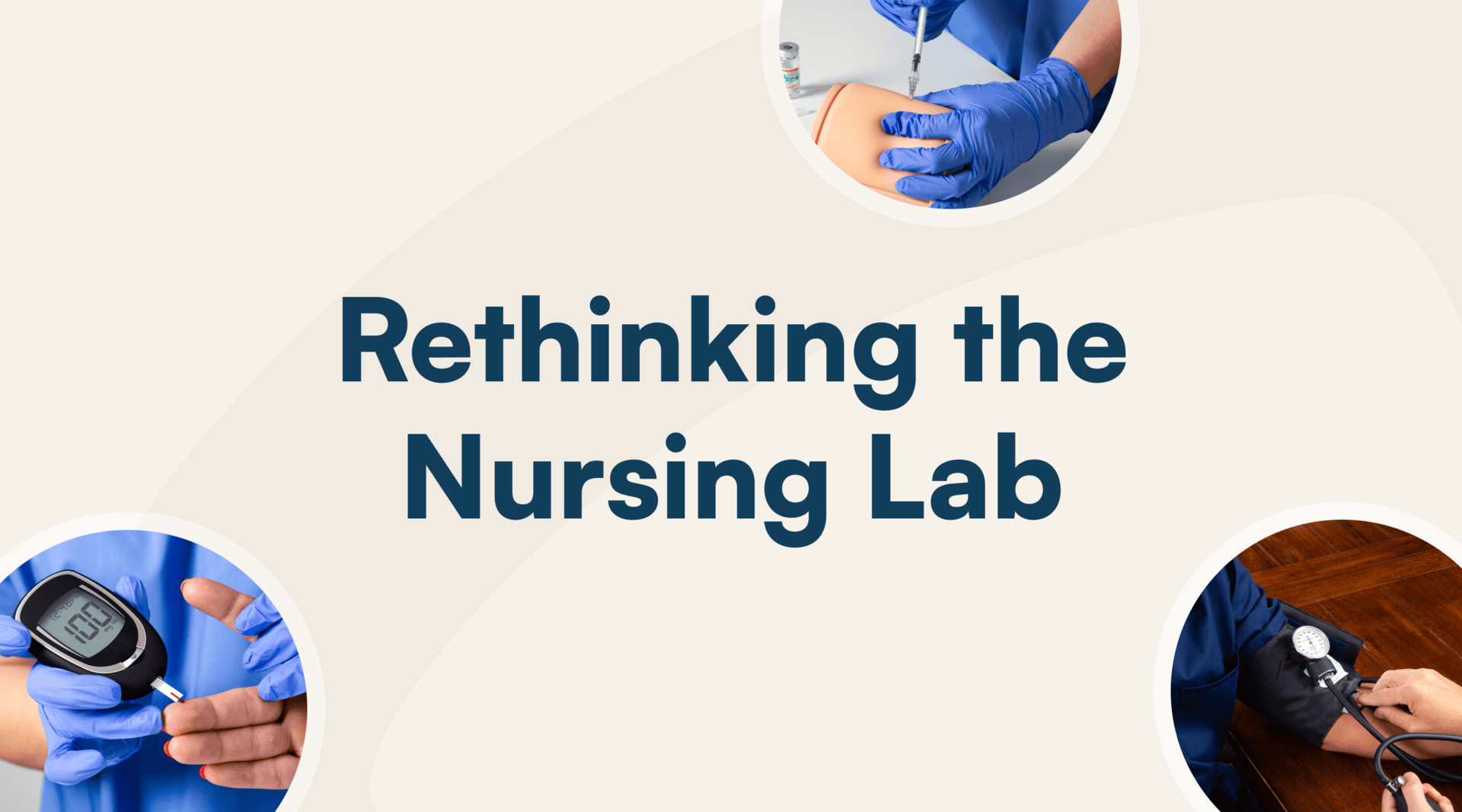It’s no secret…the past few years for high ed enrollment have been rough, and institutions have been searching for ways to increase student enrollment. The truth is, college enrollment has been declining since 2010, and has continued to fall since the start of the pandemic. After increasing for decades, traditional undergraduate college student enrollment peaked in 2010 at around 18.1 million students, according to data from the National Center for Education Statistics (NCES).
From there, it has steadily declined. In general, from 2011 through 2019, college enrollment decreased at an average rate of 1% a year, and if you look at two-year public colleges, they lost nearly 35% of their enrollment between 2010 and 2020. By the fall 2020, only about 15.9 million students were enrolled in college.
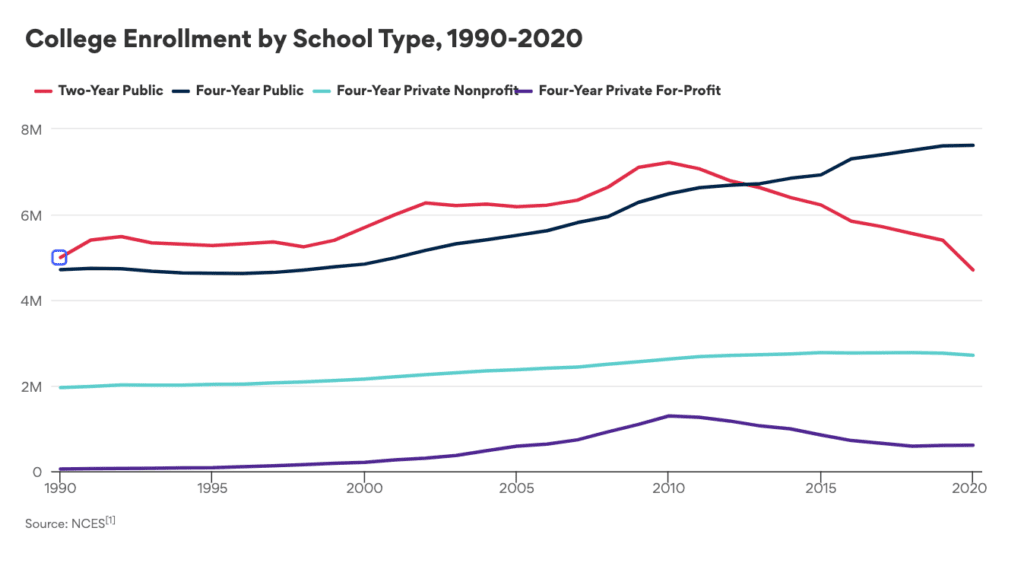
Demand for Online Courses Support Enrollment Gains
Different factors have impacted this downward trend, like falling birth rates, rising college tuition, and the economic impact of the COVID-19 pandemic, which caused many students to change their plans. But higher education is now facing a moment of change. The stats below show that institutions finding other or creative ways to increase college enrollment are reaping the benefits.
We’re talking online courses and programs, and here, we’re sharing some of the most eye-opening trends in online learning, with particular emphasis on science lab courses, that prove schools taking heed have the opportunity to cast a wider net in order to boost enrollment— while those unable to adapt to the needs and modality preferences of learners could risk falling behind.
An estimated 5.7 million students are enrolled in full online programming, which is projected to continue growing.
Source: Online College Students Report 2023. Education Dynamics
77% of learners say they decide on the online modality before any other factor, such as school or program.
Source: Voice of the online learner 2022: Shifting preferences in post-pandemic online learning. Wiley
The Takeaway: Online is Here to Stay.
Demand for online courses is clear. More than a third of today’s students learn online, and more and more prefer it — whether it be to save on costs, juggle competing priorities, or because a host of issues make campus inaccessible. If you’re not adapting your programs and courses to an online modality, you’re missing out on a large pool of learners to whom you won’t be able to market.
60% of students would choose programs at a different school if their preferred college/university didn’t offer their program online.
6% wouldn’t enroll at all. ????
The Takeaway: Every student is also your next student.
If you offer online courses, you have a greater chance of attracting students in the first place, and then even greater chances for repeat customers. Nearly half of all online program graduates say they are “likely” or “very likely” to return to the institution for another program or course, serving to build your enrollment pipeline which is going to be key for how to increase student enrollment. So say so long to the days of graduating your students and tapping into the next generation. When you offer online, you can consider every current student a potential return student.
Source: Voice of the online learner 2022: Shifting preferences in post-pandemic online learning. Wiley
STEM occupations are projected to grow 10.8% between 2021-2031.
Source: U.S. Bureau of Labor Statistics
There are less than 200 accredited online math & science degree programs.
Source: Online Science Degree Programs: The Complete Guide by GetEducated, lists 109 accredited programs
Nearly 20% of surveyed online college students are enrolled in Health and Medicine focused topics in 2023.
Source: Online College Students Report 2023. Education Dynamics
The Takeaway: Online STEM courses are an opportunity.
When it comes to your strategies to increase college enrollment, don’t overlook your science disciplines. According to the National Science Board, nearly a quarter of the total U.S. workforce have STEM educational backgrounds, with occupational needs for science-based backgrounds only projected to grow over the next decade. With a small percentage of accredited online science programs available from the U.S.’s 5,900 post-secondary institutions, moving STEM disciplines online currently remains an untapped source for enrollment gains.
94% of students have a positive view on the effectiveness of online education.
Source: 2022 Online Education Trends Report. BestColleges.com
70% of students say that online education is better than or equal to on-campus education.
Source: 2022 Online Education Trends Report. BestColleges.com
71% of learners taking required science lab courses want to do their labs from home; more than half expect hands-on.
Source: Voice of the online learner 2022: Shifting preferences in post-pandemic online learning. Wiley
96% of college officials responsible for online programs say they’ve adopted quality assurance standards.
Source: 2022’s Changing Landscape of Online Education (CHLOE) report, produced by Quality Matters and Eduventures
The Takeaway: Quality should no longer be a hang up.
The effectiveness of online learning is no longer debatable, especially as research shows little to no significant difference in performance between online and traditional classroom students or in learning outcomes in an online vs traditional course. When it comes to the quality and rigor of online science programs, courses should be accessible, inclusive, and engaging for students. Instructors need to set expectations for how students should participate and offer timely, regular feedback. Using Quality Matters-certified curriculum, the right blend of virtual and hands-on science labs, and technology like a lab management platform, instructors can ensure effective and authentic online lab experiences that support student success.
Shift to Online Science Labs to Increase Student Enrollment
The trend is clear; many students are prioritizing the online modality more than ever, and it’s an opportunity for colleges and universities to increase student enrollment. That means having the right programs online is more likely to secure enrollments, and that includes in-demand science programs.
Just take the University of California’s San Diego Division of Extended Studies for example. When they began delivering high-quality, hands-on science labs in their online Science & Sustainability programs, the division experienced enrollment gains of up to 8,000 students per year.
But we get it. One of the biggest concerns institutions face when shifting science labs online is that they believe students won’t gain the same hands-on laboratory experience as their on-campus peers. And for those that go the hands-on route, it can be time-consuming and a lot of work to source and put together experiment kits. And just the thought of retooling curriculum and creating student resources to ensure quality online science education is enough to make any instructor run for the hills.
While certainly valid, these concerns no longer have to create stumbling blocks for getting your science courses online. With the right partner, you can use both hands-on lab kits along with virtual or digital labs to provide the most authentic online lab experience possible. Plus, those kits come with the highest quality digital science curriculum available — 11 science disciplines certified by Quality Matters with more than 450 lessons to choose from. That means that you can power authentic, real-world lab experiences for students at home, creating a more active online learning environment that promotes deeper student engagement.
In the end, fully online and hybrid science courses are proving to be some of the most powerful ways to increase college enrollment, especially as the demand for STEM degrees continues to grow. And with the right tools in place, you can shift any of your science lab courses online — without the burden of starting from scratch or concerns for student safety. The best part: a hands-on approach will engage students just as well as the in-person lab experience and set them up to continue pursuing science education, all while you’ve extended the reach of your program and accessed a new pool of learners you otherwise would have missed out on.
So if you’re looking to expand access to your science offerings and interested in bringing the quality and rigor of an on-campus lab online, we can help.
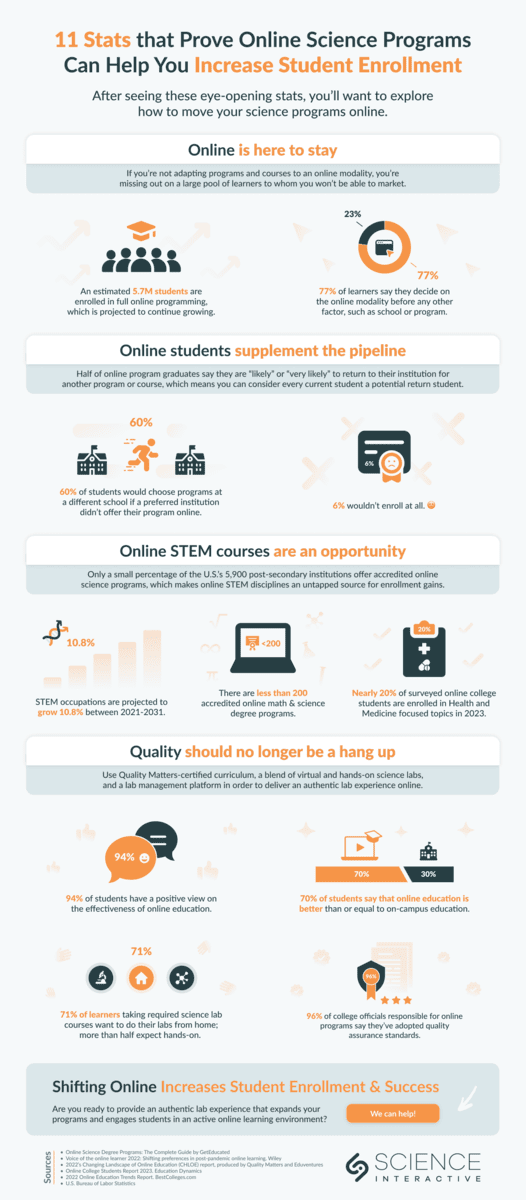
Discover more articles
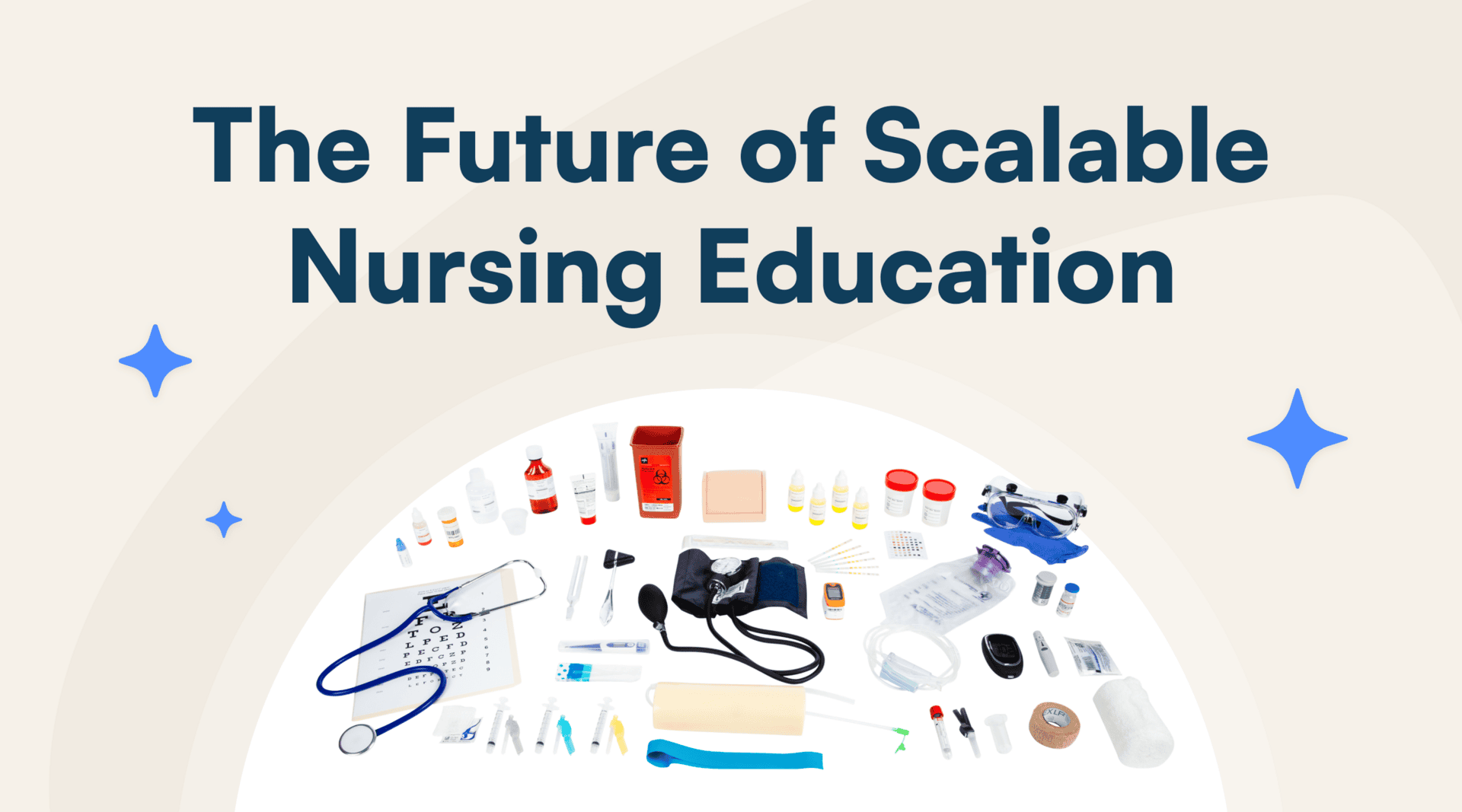
Science Interactive Launches New Nursing Fundamentals
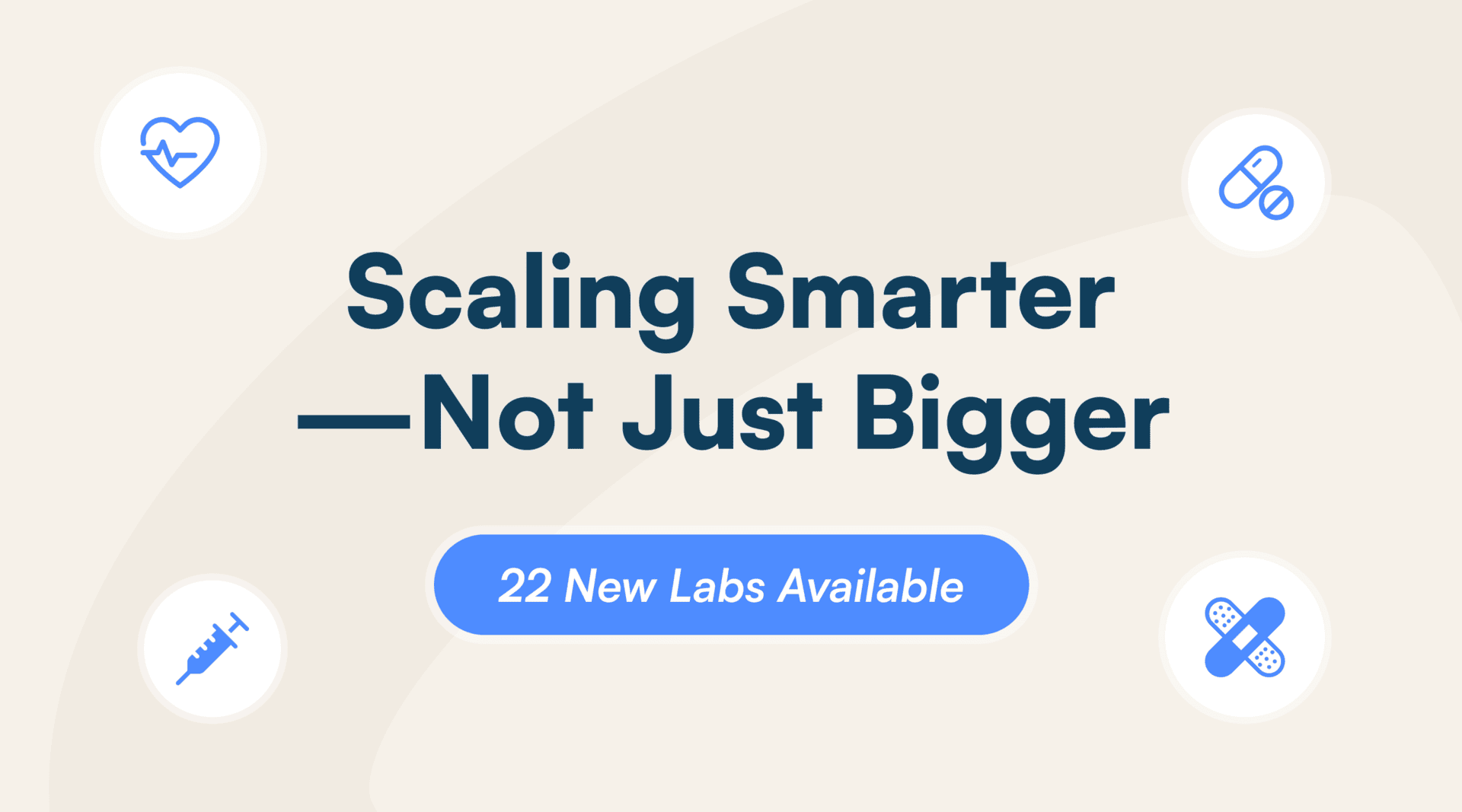
What Clinical-Ready Actually Looks Like (And How to Get There Sooner)
